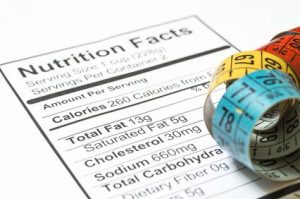Generally it can be said that most of us do not get a good balance of essential fatty acids in our diet. Perhaps this does not sound like late breaking news. However most of what we consider news does not directly impact our lives. An earthquake half way around the world will make the headlines. But in reality most of us are insulated from its effects. Essential fatty acids on the other hand will never make a reporter’s career. However, many of us are affected by these little buggers more than we may suspect.
Essential fatty acids (EFAs) are called essential because we need them to survive and our bodies cannot manufacture them. Deficiency and imbalance of EFAs are blamed for an impressive list of chronic health conditions. But, unlike the distant earthquake, EFA deficiency is unlikely to make the headlines.
Two very notable essential fatty acids that are worth our attention are omega-3 and omega-6. They get their names because of the placement of the first of multiple double carbon bonds in the molecule. Though the chemistry is important it is not the focus of this essay. What is important to us now is the potential health impact of these two fats. Let’s take a closer look at each of these essential fatty acids separately and then consider their relation to each other.
Omega-6
In reverse order we will consider omega-6 first. Perhaps we do not hear as much about omega-6 as we do its counterpart. But consider this impressive resume. Omega-6 has been useful in the treatment of anorexia nervosa, ADHD, osteoporosis, diabetes, eye disease, certain skin conditions, allergies, rheumatoid arthritis, tuberculosis and even cancer. Not bad for an unsung hero. Go over that list again. These are all serious conditions that have been tied to omega-6 deficiencies. So why do we hear so little about this little gem? Perhaps it is because health issues only become exciting once there is an obvious problem. Then we usually look for a pill to take. But if this is a reason for our ignorance it is not the biggest reason.
The plain truth is most of us are getting plenty of omega-6 in our diets. In fact most of us get way too much. Over ten times too much. That’s a switch isn’t it? Too much of a good thing. The reason we get so much of it is because many of the foods we buy are processed with some type of linoleic acid which is a popular form of omega-6. In addition many oils we use are high in omega-6 such as sunflower, safflower, soybean, corn and cottonseed oils.
So what’s the rub? Why worry about too much omega-6? Our bodies have the ability to convert linoleic acid into longer chain fatty acids which lead to the production of eicosanoids. Eicosanoids depending, on their source, can have positive and negative influences on our bodies. They can slow intravascular clotting which helps to prevent heart attacks and strokes. They suppress inflammation preventing us from overreacting to allergens. They dilate blood vessels reducing hypertension and increasing good blood delivery. They can also control cell growth slowing the rapid growth of cancer cells.
On the other hand they might increase blood clotting which leads to heart attack and stroke. They suppress the immune system leaving us more open to infection. They increase cellular growth thereby promoting the growth of cancer cells. And they create new blood vessels which can feed cancer cells. Unfortunately eicosanoids produced by an overabundance of omega-6 in the system cause many of the negative factors mentioned above.
Omega-3
Omega-3 has the opposite story. Like omega-6 it is essential to proper health and is useful in the treatment of many chronic diseases. Among these conditions are heart attacks, cancer, lupus, schizophrenia, accelerated aging, stroke, insulin resistance, asthma, postpartum depression, obesity, diabetes, arthritis, ADHD, and Alzheimer’s disease.
But unlike omega-6 most diets are deplorably deficient in omega-3. Most of us get only a small amount of what we need for optimal health. Though it can manifest itself in many ways this deficiency may be most noticeable in chronic heart disease. Entire cultures are known to have very low incidence of heart disease because of diets high in omega-3 rich foods. Most notorious among these are Eskimos. Danish researchers first learned this secret from the Eskimos. Of course the Eskimos did not realize they had a secret. They were just eating large amounts of the fatty foods that were available to them. That’s right, fatty foods. Foods like salmon which are high in omega-3.
Once the secret was out researchers rolled up their sleeves and produced a flurry of studies and trials to test the hypothesis that omega-3 reduces heart disease. The studies continue to go on. But the overwhelming conclusion is consistent with the original observations. That is: omega-3 reduces incidence of heart disease. In fact the conclusions are so certain the even the American Heart Association now recommends fish oil supplements for any one with documented coronary heart disease or high triglycerides. That was no small concession for the AMA.
Balance
Of course we all understand that the key to everything is balance. Perhaps this familiar sentiment is nowhere more important than it is to the topic at hand. Both omega-6 and omega-3 are essential to health. But the ratio at which we ingest these fatty acids is key. Scientists differ on the optimal ratio. One recommended ratio is 5 parts omega-6 compared to 1 part omega-3. Some would stretch that to a 10:1 ratio. The more conservative estimates place the optimal ratio somewhere between 1:1 and 4:1. Unfortunately the average American diet includes an omega-6/omega-3 ratio between 14:1 and 20:1. This imbalance contributes to many of the chronic health problems mentioned above.
So what do we do? Assuming you are a reader who takes this seriously there are some steps you can take to assure better health for you and your family. You can begin by avoiding foods prepared with linoleic acid and some of the linoleic acid rich oils mentioned above. Buy less prepared foods and do more home cooking. Then make every effort to increase omega-3 consumption. Cold water fish like salmon and tuna (not the canned varieties) are very high in omega-3.
But you need to eat these fish more than once per week. I have met people who eat salmon every day for breakfast. If you are not a fish lover or are concerned with marine pollutants try fish oil supplements. The good ones are completely free from contaminants. Our diets have contributed to the increase of chronic conditions like heart disease. Our diets can go a long way toward resolving the problems.







Be First to Comment